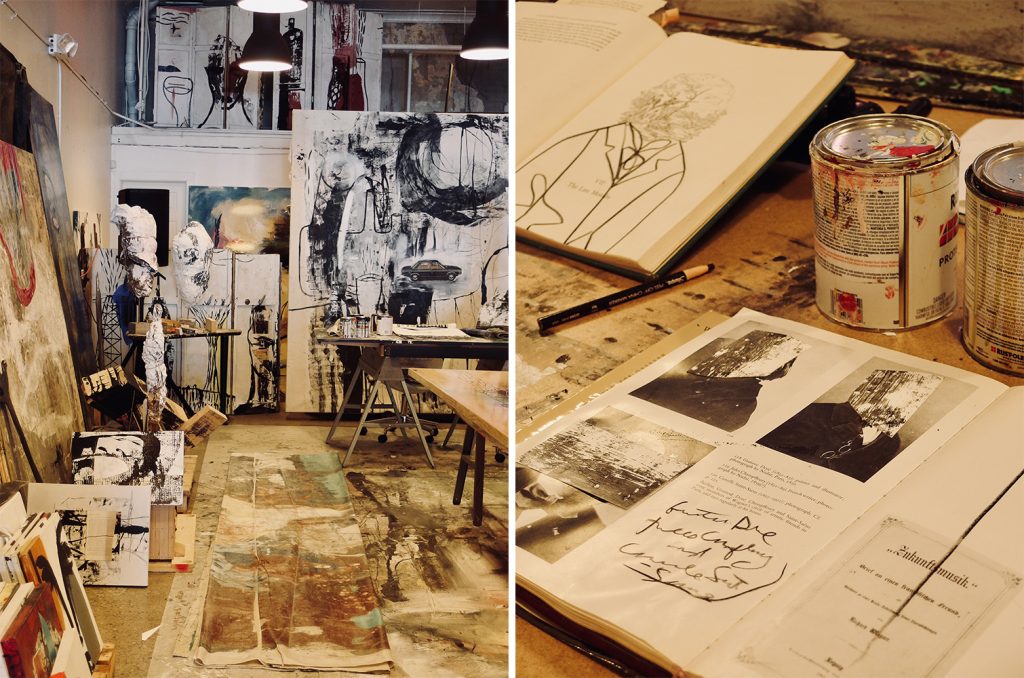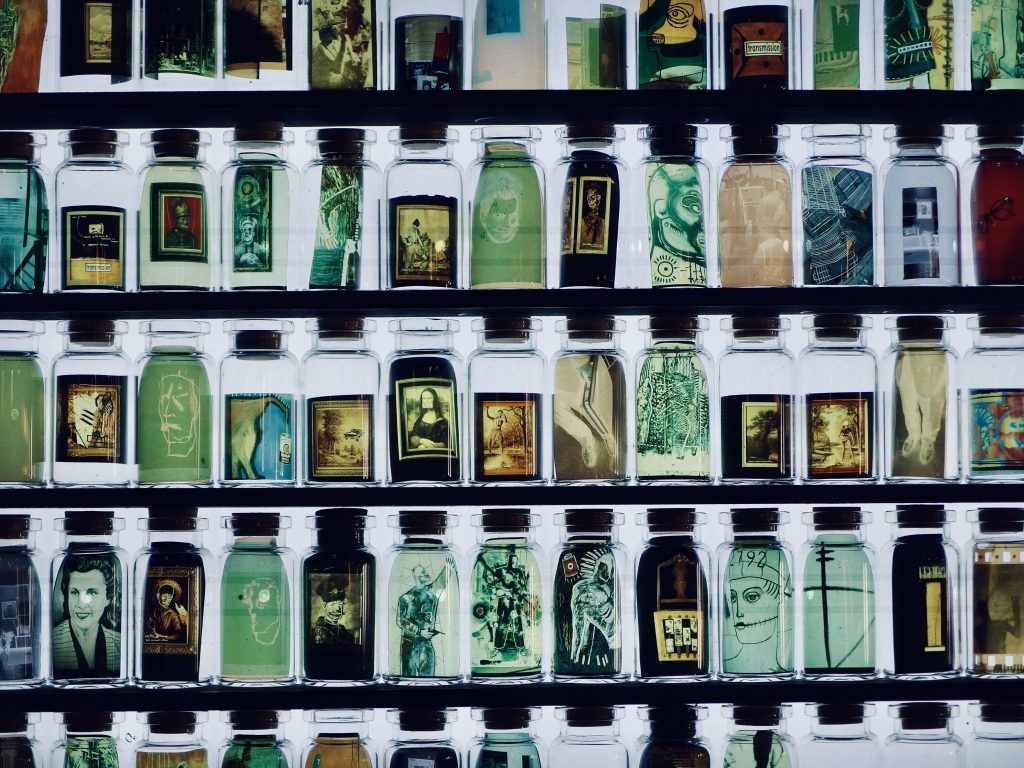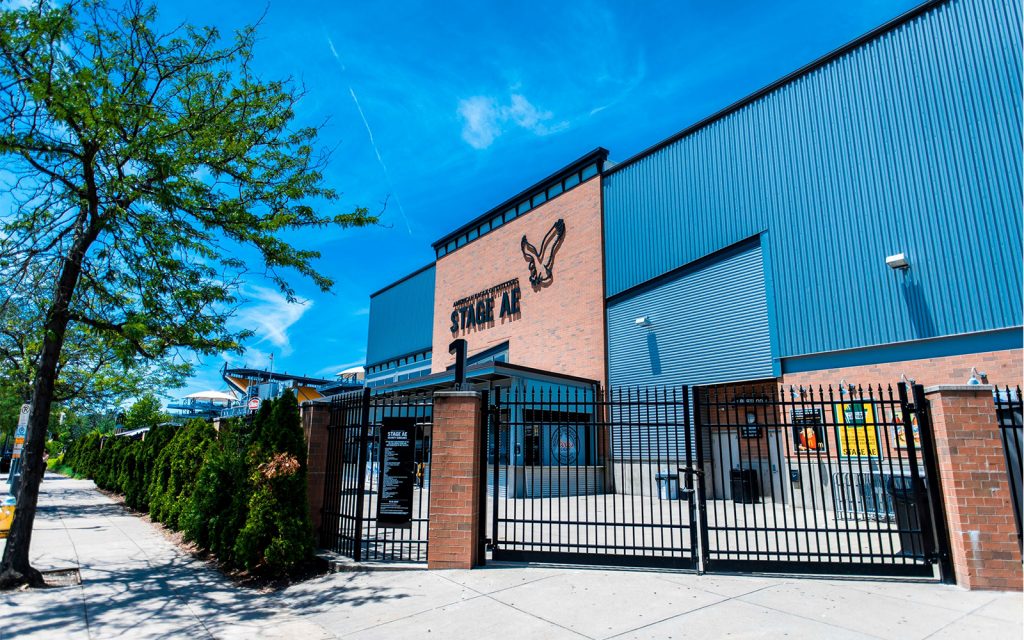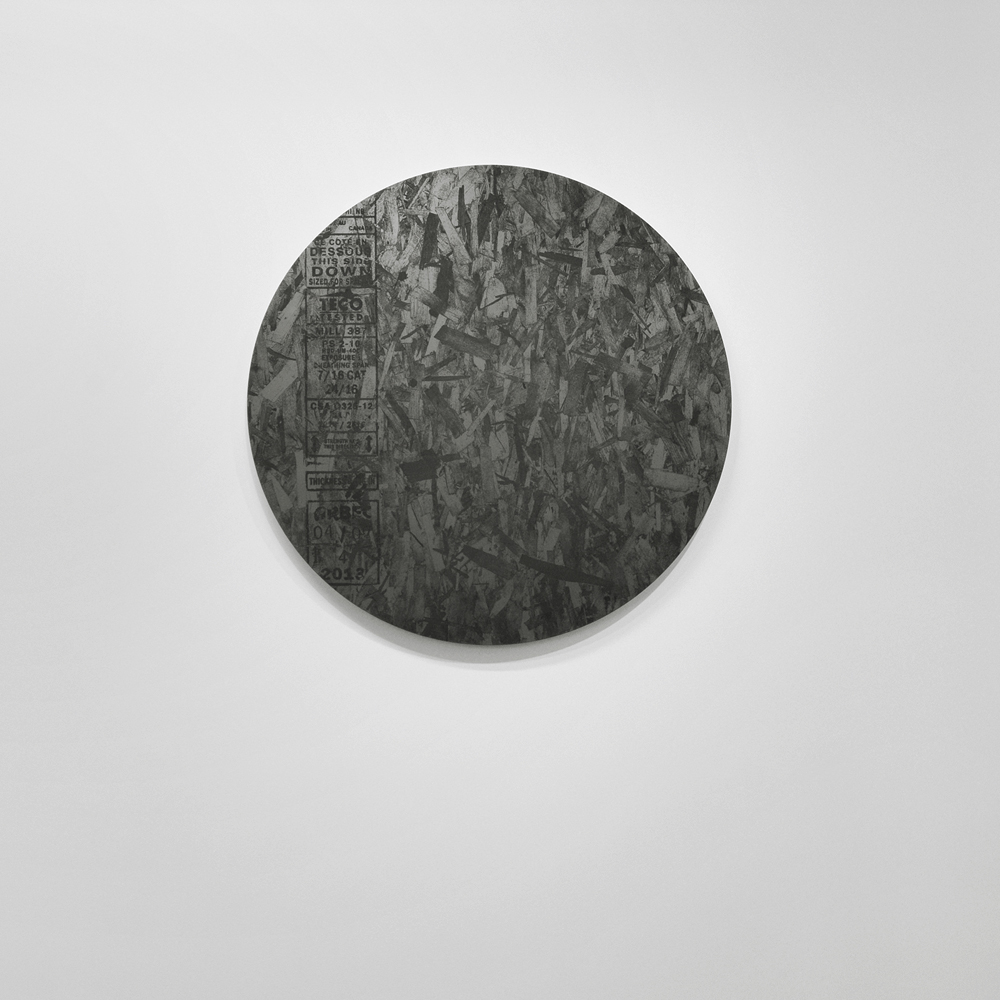Studio Visit: Artist Michael Lotenero
Inside his Pittsburgh studio, the artist details the processes behind his “circular” portfolio

Faces find you in artist Michael Lotenero‘s Pittsburgh studio. They mark your arrival, watch you from the walls, peer from behind stacks of nature-inspired abstraction. In addition to the artwork, we were lucky to be greeted by Lotenero’s face when we visited, as he took us through unmarked drawers full of collage-like experiments. In his practice, Lotenero embraces the recognizability found in his otherwise abstract portraiture. One such work hangs on a sign outside his space, located just blocks from the tchotchke and produce stands that populate the city’s bustling Strip District neighborhood.

The artist splits his time between Pittsburgh and Brooklyn, but has remained in the former through the pandemic. He admittedly does most of his work there anyway. This includes projects for Nintendo, IBM, Sony Pictures and Panasonic, as well as paintings bound for institutions like the Carnegie Museum of Art, Austin Museum of Digital Art, Westmoreland Museum of Art and the Mattress Factory.

Though the collection he stores in his studio spans decades and intentions, it’s indicative of his pace. “I really just come in and go to work,” he tells us. “I treat it like I just need to be here and see what happens. I like to tinker around and sort of play with things, play with ideas. It’s rare that I go, ‘Oh, I’m going to do a show in March and work toward that.’ I just come in, do the work and things find places.”

More recently, Lotenero has taken to finding the beginnings of larger works in thrifted books or magazines. Upending his affection for drawing faces, he instead builds bodies from portraits or pictures he stumbles upon. From there, he lets the piece grow. He’ll apply the found image and his additions to a clear, poly-plastic material and wrap it around the back of a painted canvas, allowing light to catch the interior and illuminate the inner workings of his art. Layers are exposed, brief absences of paint are emphasized and perhaps most impressively the double-sided works gain warmth and depth from the collision of the material and dark paint.

“These are the first times the found object is bridging into painting,” Lotenero explains. He’d completed works inside or on objects under the pseudonym Monisgnor Impala, but they were never amplified to such a scale. “I actually did this longer-term project in hotels we’d stay in around the world. I’d add little things to the artwork there and document that process. It was a sneaky thing that people could find, and it was just me having fun with the hotel’s artwork. I’d never mess with anything legit, of course,” he adds.

This spirit for experimentation permeates his efforts across mediums. In the window and by the back wall of his studio, misshapen bodies cradle tiny clay or wooden heads. A diorama perches on a wooden pedestal behind his workbench. Six works he made in the ’90s sit front and center in the studio. They deviate from his more recent efforts—abstractions and amalgamations—but draw attention just the same. “I took these out of my attic last week and I just sold one. They’re from 30 years ago,” he says.

Throughout those decades, his interests, styles and processes changed. “I started very abstract. My first work was very non-figurative and just textures and shapes and things like that—more like abstract expressionism,” he says. “And then I got more into figurative work. It’s kind of weird to see everything all at once because it’s rare that anyone gets to see all of their work in one place. It’s literally a life’s work. I don’t know. It’s just weird to see. I like to break off and do things that aren’t always like what I just did, but you can still see that there’s a thread that goes through everything. I think it’s interesting to treat it as kind of circular. I keep running around
playing with it all.”

“You do get caught up in ‘Oh, that was really successful,’ or ‘I’m able to do that and let people know that’s mine.’ You want to stay there. Like my heads; everyone knows when you see one of these faces that it’s mine, but a lot of people paint portraits and heads. It’s always been something that was there at the beginning and I come back to it, but it does feel nice to break off and do other things. It’s scary, though, too,” Lotenero says. “You want to be comfortable; you want to be happy with what you’re doing… But other things can happen, too. You have to be open to that. And when things do happen, something else can happen, and I might find that it’d be a really cool big painting.”

Visiting Lotenero’s studio proves plenty of his experiments eventually become large, significant paintings. A garage door at the front of the studio has afforded him the opportunity to produce works on ultra-sized canvasses. They take up most of the wall, even with double-height ceilings. But it’s the belly of his studio that bears the most ambitious entries to his portfolio. Poster-sized works are folded into zines; even larger works are chopped into pieces to be placed onto the pages the posters form. In the corner, a light box holds nearly 100 apothecary-style vials. Inside each are translucent miniatures of his work or other printed pieces. It’s a tiny gallery in its own right, worth viewing up close and, Pittsburgh weather willing, in the shadow of an overcast sky.

“I like things just to happen as opposed to trying too hard. I feel like when I push it, or my hand is too heavy, I ruin it—it’s like hearing your own voice on a recording,” he explains. “I’d rather just let things happen naturally. I’ll do something, move on and then I’ll come back to it. It’s about learning to step away and come back again. Sometimes I’ll hate something and come back the next day and love it. But in that moment, in your head, you’re like, ‘It’s awful. I hate it.’ But sometimes those awful things are the next step. It’s the uncomfortable stuff, what you don’t recognize. You just have to make things and see what happens.”
Lotenero’s studio (2708 Penn Ave, Pittsburgh, PA, 15222) is open to the public on Saturdays or by appointment the rest of the week.
Images by Evan Malachosky












